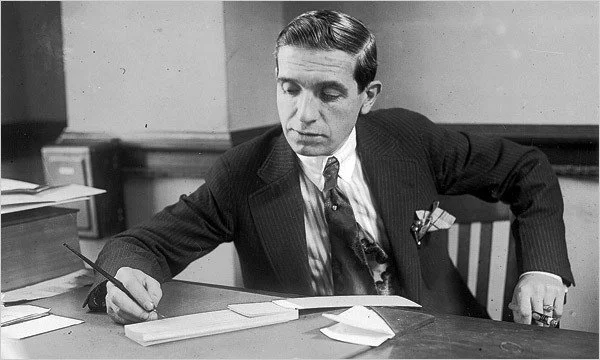I am delivering a talk on financial crimes [1] on 16th December 2021 and decided to speak about Madoff’s Ponzi scheme which was worth about $64.8 billion in 2008 [2] before the recession brought the fraud in open. Harry Markopolos sent a letter, “The World’s Largest Hedge Fund is a Fraud” [3] to the SEC on November 7, 2005, highlighting about 30 red flags regarding Madoff’s operations and why there was extremely likely chance that he was running a Ponzi scheme. The Report of Investigation [4] issued by the United States Securities and Exchange Commission Office of the Inspector General found that...
“…between June 1992 and December 2008, when Madoff confessed, the SEC received six substantive complaints that raised significant red flags concerning Madoff’s hedge fund operations and should have led to questions about whether Madoff was actually engaged in trading. Finally, the SEC was also aware of two articles regarding Madoff’s unusually consistent returns”
The subject has been well documented with shocking clarity regarding lack of replicability of the strategy, impossible consistency, non-volatile returns, absence of the third-party validation, great investigative work using Mosaic Theory [5], lack of disclosures, co-mingled funds, poor benchmarking, inexperienced examiners, aura of the challenged vs. non descript challenger, contradictions, inconsistencies, lack of attention, stark resistance to common sense, lack of homework, inability to listen, lack of follow up, fear of going after a powerful man (Madoff was ex. Chairman of Nasdaq), how inability to prove fraud fed into more credibility, regulators lack of understanding of a market strategy - derivatives, poor comfort with portfolio analysis, storytelling, secrecy, opacity, inability to follow cash flows, how to challenge someone with reputation, astonishing ability to time, all led to closing of the investigation in August 2006 and highest performance rating for the staff attorney on investigation. And eventually, it was the 2008 recession and the redemptions that broke the chain of lies.
From a due diligence [6] perspective, everything failed. The performance return crowded out every speck of rationality from the argument. A visual or a set of visuals would have separated the outlier character of the strategy. The five components of risk measurement, the where, when, how, what, whom was not important. What was important was the 15% annualized returns and the fee it generated for the asset-raising companies.
There was no search for exceptions, no monitoring objectives, no desire to gain confidence over the investment process, no search for style drift, style discipline. There was no scoring among peer cohorts, no due diligence matrix, no differentiation of data from static to dynamic, no care for lack of deviations from expected results, no anxiety of how idiosyncratic risks were managed between the small basket of stocks. There was no key person risk, no need for the key person insurance policy, no reverence for the manager, no activity logs. The operation was a blind pool, somewhere accepting the reality of the 16-year return as a truth, which did not care about the heroic capabilities of the manager but attracted fireflies to the fire.
Civilizational memory is myopic [7]. The new generation does not learn from the lessons of the older generation, the very reason history functions because it is considered useless. While compliance gets ready to learn from the past, the future moves on from discretionary managers to machines. The new-age Ponzi scheme is not run by a physical manager but by a quantitative algorithm, which is opaque, more convincing, more widespread, and hence more damaging.
I was recently contacted by a childhood friend, who wanted to know how her crypto fund is growing so fast and how the forecasts given by the platforms are so accurate. The accuracy and the fast generation of returns bothered her. The hallmark of a great investor is an ability to question. If you can’t question, you are the sheep, one from the herd, at the mercy of a Ponzi machine, which can take you up 100% and bring you down to zero in no time.
Harry might have wondered how his shouts that the emperor has no clothes fell on deaf ears but the times we live in are more complex. According to Campbell Harvey [8], professor at Duke University, the rigor of financial academia since 2015 is more akin to the emperor regretfully proclaiming his own nudity. If financial theory has failed [9] and all the forensic can not make us capable to understand moral hazard, we are left with markets as the final arbiter which can sustain the facade or bring the fraud down.
The evergreen golden age of fraud [10] is intertwined with the golden age of intelligence. You can’t separate the two. The rules to identify a smart machine from a Ponzi machine are simple. An intelligence machine does not fear transparency, is never opaque, is explainable, is replicable, is testable, is scientific, is systematic and is 3rd party validated. While the machine has its strengths, it is not perfect, it is not flawless, it does not work in all markets at all times. Anything which claims otherwise is not intelligent and is like a Ponzi machine, which like Madoff, has only one thing stellar about it, its returns.
[1] Fin Crime
[2] Madoff’s Ponzi scheme
https://en.wikipedia.org/wiki/Madoff_investment_scandal
[3] “The World’s Largest Hedge Fund is a Fraud”, SEC
https://www.sec.gov/news/studies/2009/oig-509/exhibit-0293.pdf
[4] The Report of Investigation
https://www.sec.gov/files/oig-509-exec-summary.pdf
[5] Material Non Public Information, CFA Institute
[6] CAIA Association, K. Black, D. R. Chambers, H. Kozemi, Advanced Core Topics in Alternative Investments, Wiley, 2020
[7] Mukul Pal, Cycle Blind, mukulpal.ai, 2008
https://mukulpal.com/blog/2021/3/17/the-cycle-blindness?rq=Cycle%20Blind
[8] Robin Wigglesworth,The hidden ‘replication crisis’ of finance, Financial Times, 2021
https://www.ft.com/content/9025393f-76da-4b8f-9436-4341485c75d0
[9] Paul Kovarsky, “Fabozzi: Finance Must Modernize or Face Irrelevancy, CFA Institute, 2019
[10] Horatiu Tocan, Revisiting Caritas, June 16, 2007
https://mukulpal.com/blog/2021/12/15/revisiting-caritas?rq=Horatiu
